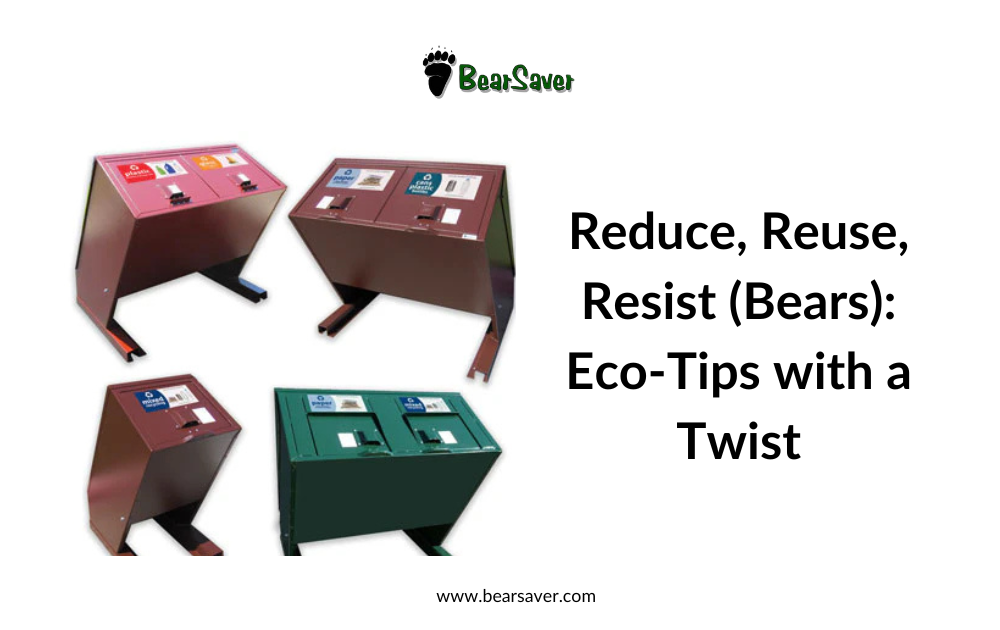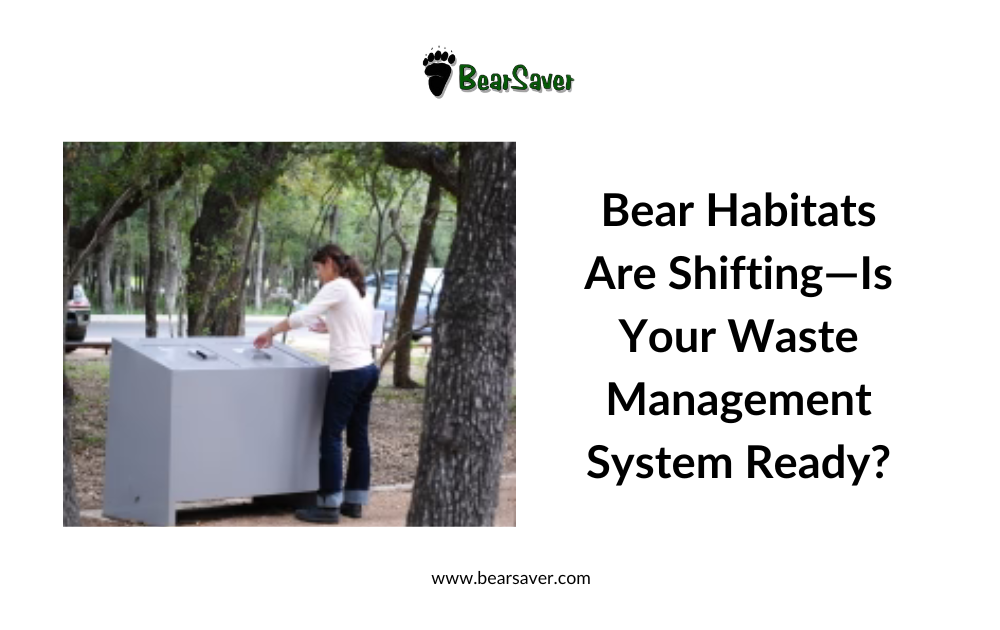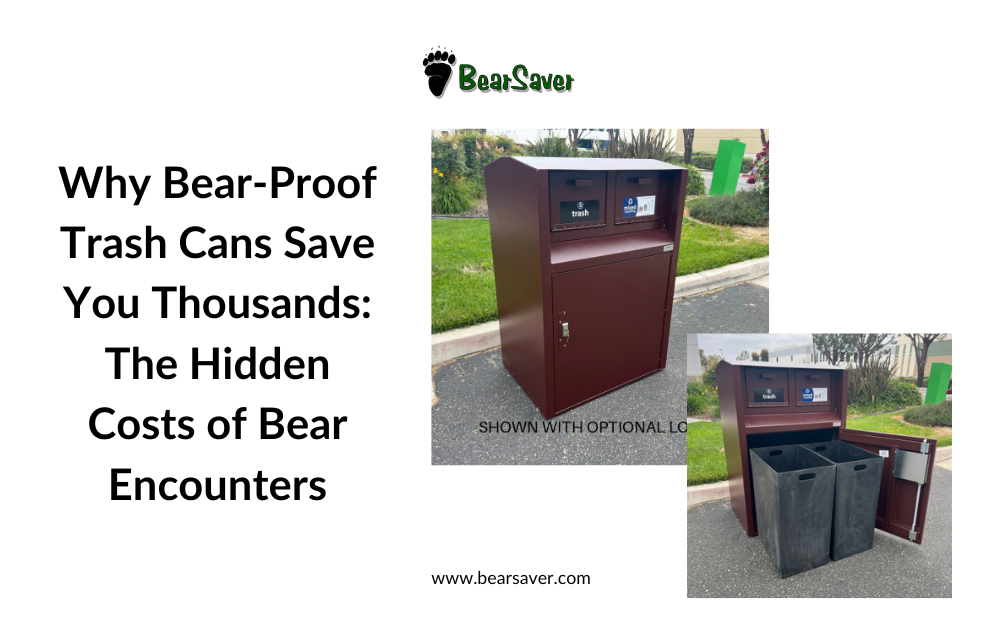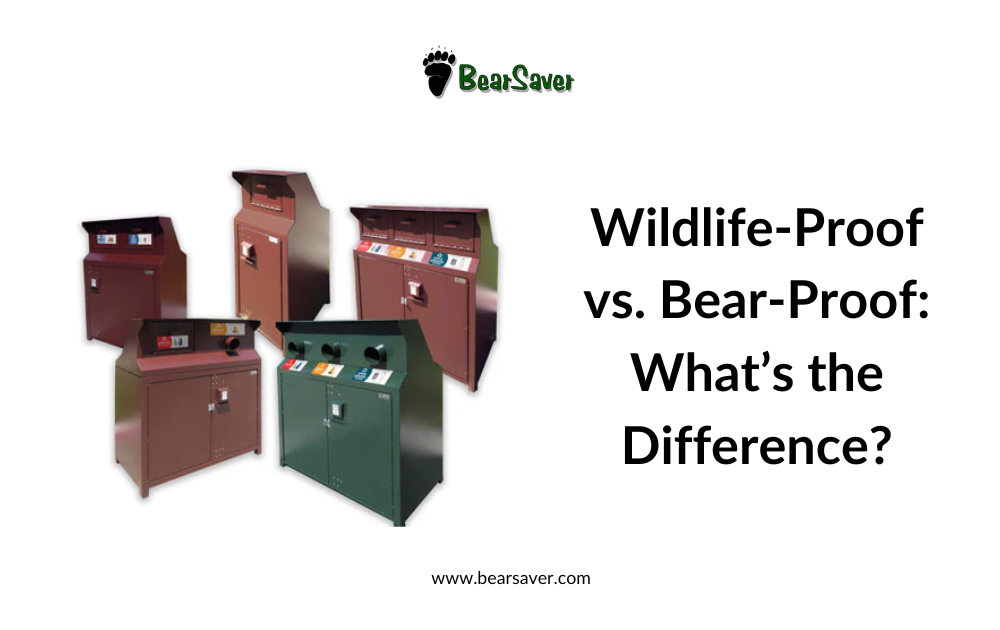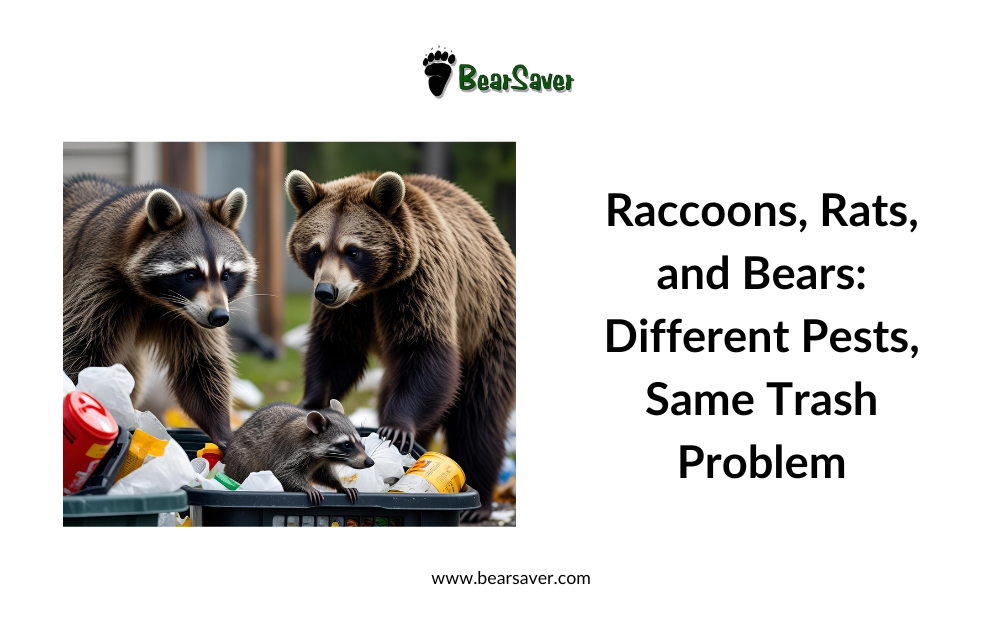News
Reduce, Reuse, Resist (Bears): Eco-Tips with a Twist
Posted by Securr Blogger on
When it comes to protecting the planet, we all know the three Rs: Reduce, Reuse, Recycle. But in bear country, there’s one more you’ll need to add: Resist—as in resist wildlife break-ins with the help of BearSaver. As a leading manufacturer of bear-resistant trash cans and recycling bins, BearSaver helps communities stay clean and wildlife stay wild. Let’s explore how you can live greener and safer with our bear-smart eco-strategies. 1. Reduce: Keep Temptations to a Minimum Reducing waste is the first line of defense—not just for the planet, but for keeping bears out of your backyard. The less you throw away, the fewer scents there are to attract curious (and hungry) visitors. Here’s how: Compost responsibly in enclosed, bear-resistant systems. Shop smart: buy in bulk and avoid individually wrapped items. Plan meals to reduce leftovers and food spoilage. 2. Reuse: Think Twice Before Tossing Reusing items isn't just good for the environment—it also helps keep your trash volume (and...
Bear Habitats Are Shifting—Is Your Waste Management System Ready?
Posted by Securr Blogger on
As climate change and urban sprawl continue to reshape ecosystems, bears are expanding their territories in search of food. Once confined to remote forests, bear sightings are now increasingly common in suburbs, parks, and campsites. This shift presents new challenges for waste management, especially in bear-prone regions. At BearSaver, we’re here to ensure you’re ready. The New Normal: Bears Closer to Home Bears are opportunistic feeders with an excellent sense of smell. Improperly managed trash is like a dinner bell for them. As their natural habitats shift, your community may be on the frontlines—even if it never was before. From national parks to residential neighborhoods, municipalities and property owners are facing increased risk of bear encounters, property damage, and public safety concerns. And at the heart of many of these issues? Unsecured garbage. Why Bear-Resistant Trash Solutions Matter Conventional trash cans just don’t cut it when bears come knocking. Once a bear gets into unsecured waste, it often returns, creating...
Why Bear-Proof Trash Cans Save You Thousands: The Hidden Costs of Bear Encounters
Posted by Securr Blogger on
When bears come sniffing around for an easy meal, your unprotected trash can becomes a gateway to serious—and expensive—problems. While the image of a curious bear rummaging through garbage may seem harmless, the reality is anything but. From property damage and community safety risks to fines and wildlife control expenses, the costs of bear encounters add up quickly. The good news? Investing in prevention—like BearSaver’s industry-leading bear-proof trash enclosures—can save you a fortune in the long run. The Real Cost of Bear Intrusions When a bear gains access to trash, it’s not just a messy inconvenience. Here's what’s really at stake: Property Damage: Bears can tear through fences, break into garages, and destroy landscaping in search of food. Public Safety Risks: Once a bear associates humans with food, the likelihood of aggressive encounters increases dramatically. Wildlife Management Costs: Relocating or euthanizing habituated bears requires time, resources, and taxpayer dollars. Fines & Liability: Many communities now issue fines for unsecured trash...
Wildlife-Proof vs. Bear-Proof: What’s the Difference?
Posted by Securr Blogger on
Outdoor waste attracts everything from crafty raccoons to 600-pound grizzlies. But the terms wildlife-proof and bear-proof are not interchangeable—understanding the gap can save you serious cleanup costs (and keep wildlife safe). 1. What Does “Wildlife-Proof” Really Mean? Wildlife-proof (sometimes called critter-proof or animal-proof) containers are designed to block smaller, opportunistic animals—think raccoons, skunks, squirrels, even curious birds. Typical features include: Tight-sealing lids and gaskets Moderate-strength latches that frustrate nimble paws Smooth exteriors that are hard to grip or chew through For many urban parks, campuses, and neighborhoods outside bear country, a robust wildlife-proof bin is often sufficient. 2. Bear-Proof: A Much Higher Bar Bears possess immense strength, long claws, and problem-solving persistence. To earn the bear-proof label, a container must survive rigorous live-bear testing or technical evaluation set by the Interagency Grizzly Bear Committee (IGBC) —products literally spend time in front of captive grizzlies trying to break in igbconline.org.Passing the IGBC test confirms that the design meets minimum resistance standards—but...
Raccoons, Rats, and Bears: Different Pests, Same Trash Problem
Posted by Securr Blogger on
No matter where your business or facility is located, one thing is certain—if your trash is unprotected, animals will find it. Raccoons, rats, and bears are different in size and behavior, but they share one goal: accessing your waste. At BearSaver, we engineer animal-proof commercial containers that stop each of these pests in their tracks. Raccoons: Clever Climbers and Lock-Pickers Raccoons are infamous for their dexterity. These nocturnal bandits can open lids, unlatch bins, and tip over unsecured containers. In suburban parks, campgrounds, and apartment complexes, raccoons pose a constant nuisance. BearSaver enclosures are designed with locking mechanisms raccoons can’t bypass, reinforced lids, and sturdy steel construction that resists tipping and tampering. Rats: Persistent Chewers and Squeeze Artists Rats don't need much to get in—a crack, a loose hinge, or a chewed corner will do. Once inside, they create health hazards and attract more pests. BearSaver’s steel enclosures eliminate weak points common in plastic bins. Tight seals and chew-resistant materials...

